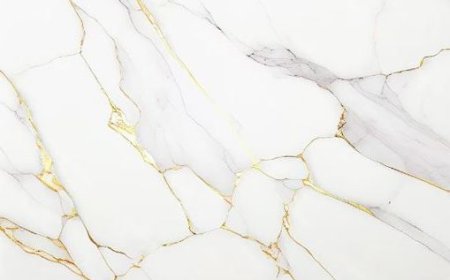Embracing Functional Aesthetics in Office Table Design

Office spaces are no longer confined to dull, uniform furniture and sterile settings. Todays work environments are designed to boost productivity while reflecting a companys personality and values. Among the essential elements that contribute to a well-structured workspace is the office table. The evolution of office table design has seen a remarkable transformation, merging ergonomics, technology, and visual appeal to cater to the demands of modern businesses. Contemporary tables are not just flat surfaces to place a laptop; they are productivity tools that support daily workflows and improve employee wellness. Whether it's a CEO suite or a shared coworking space, investing in innovative office table design is a step toward enhanced workplace performance and employee satisfaction.
Key Elements That Define a Good Office Table Design
A functional and attractive office table begins with well-thought-out design elements. First, ergonomics should never be compromised. Tables must be at a suitable height, offer sufficient legroom, and pair seamlessly with ergonomic chairs to reduce fatigue. Second, storage integration is another significant aspect. Many modern office table designs come with built-in drawers, shelves, or cable management systems that help maintain a clutter-free desk. Material choice also plays a critical role in determining the table's durability and style. Wood, metal, glass, and engineered boards each offer unique aesthetics and maintenance levels. Moreover, color schemes are increasingly tailored to match the branding of businesses, with neutrals, earthy tones, and minimalistic finishes currently in high demand.
Innovative Office Table Designs for Diverse Work Environments
As the workplace continues to evolve, so do the needs of different job roles and departments. Office table design must cater to various functions, from collaborative brainstorming sessions to confidential client meetings. Adjustable tables, for instance, have gained popularity as they allow users to switch between sitting and standing positions effortlessly. Executive desks are often designed with grandeur, featuring expansive tops, elegant finishes, and high-quality wood to convey authority. On the other hand, minimalist desks with sleek lines and space-saving designs are ideal for compact urban offices or home-based workstations. Conference tables, too, are being designed with built-in AV connectivity, hidden power outlets, and wireless charging docks to accommodate tech-driven meetings.
Importance of Customization in Office Table Design
Customization is a key trend driving office furniture decisions today. Businesses understand that a one-size-fits-all approach no longer applies. Personalized office table design not only enhances the users comfort but also reflects the organizations branding and values. Custom tables may include bespoke dimensions, personalized finishes, branded engravings, or modular units that can be rearranged as needed. Many companies are working with designers to develop tables that support specific workflows, such as L-shaped desks for multitasking or U-shaped configurations for managerial roles. Additionally, color and texture customization helps reinforce a brands identity and make the workspace more welcoming and inspiring.
Space Optimization Through Smart Office Table Design
Urban offices often struggle with limited space, making efficient furniture solutions vital. Smart office table design incorporates elements that help maximize available area without sacrificing usability or style. Foldable tables, nesting desks, and wall-mounted units are ideal for offices where floor space is at a premium. Modular furniture is another solution that allows for easy reconfiguration based on changing team sizes or project needs. Shared worktables or long bench-style desks support team collaboration while occupying less space. Moreover, tables with under-shelf storage or vertical filing solutions help reduce reliance on large cabinets, keeping the office layout more open and accessible.
Blending Technology and Office Table Design
As technology becomes a central part of every business operation, office table design must accommodate it efficiently. Desks today are built with features that support device usage, improve connectivity, and enhance user convenience. Cable management systems ensure wires remain organized and hidden. Some tables come with USB ports, built-in power sockets, and even integrated wireless charging pads. Adjustable height desks powered by electric motors allow users to customize their workstation with the touch of a button. Furthermore, smart desks are entering the market, equipped with sensors that track sitting time, posture, and productivity levels, encouraging healthier work habits.
Eco-Friendly Materials and Sustainable Design Choices
Sustainability is no longer a niche concern but a mainstream priority for most businesses. Office table design is reflecting this shift by integrating eco-friendly materials and sustainable manufacturing processes. Recycled wood, bamboo, and responsibly sourced MDF boards are common in todays designs. Non-toxic finishes and water-based adhesives are also being used to minimize environmental impact. Companies are becoming more conscious about investing in furniture that not only looks good but is also ethically produced and durable. The goal is to reduce waste, carbon footprint, and ensure long-term usability of office tables without frequent replacements.
The Role of Office Table Design in Employee Wellness
Employee well-being is closely tied to the workspace environment, and office table design is a major contributor to this. Ergonomically designed desks help reduce neck and back strain, especially for employees who spend long hours at their workstations. Sit-stand desks encourage movement, which is essential to combat the negative health effects of a sedentary lifestyle. A well-organized table with enough space for a computer, documents, and personal items can enhance focus and minimize stress. The right lighting placement and screen angles can also prevent eye strain. Thus, thoughtfully crafted office table design promotes a healthier and more productive workforce.
Creating a Brand-Driven Office Aesthetic Through Table Design
The visual identity of an office speaks volumes about a companys culture and professionalism. Office table design should be in harmony with the overall aesthetic of the workspace. A tech startup may prefer clean, minimalistic desks with matte finishes and a pop of color, while a law firm might lean towards traditional, solid wood executive tables with classic detailing. The layout and design of tables can also influence how departments interact, whether its encouraging collaboration or maintaining individual focus. Design consistency across furniture pieces creates a cohesive brand experience for clients and employees alike, ultimately reinforcing corporate identity and values.
Conclusion
Modern office environments demand more from furniture than ever before. From ergonomics and technology integration to aesthetics and sustainability, the evolution of office table design reflects the multifaceted needs of todays businesses. Investing in the right office tables is an investment in employee comfort, brand identity, and operational efficiency. Whether you're setting up a new office or revamping your current layout, exploring innovative table designs tailored to your workspace can make a significant impact. For businesses in the Philippines seeking expertly crafted furniture solutions, office furniture Manila offers an impressive range of designs that balance style, function, and quality.


































![Play99 Login & Registration Guide for Indian Users [2025 Update]](https://www.atlantanewsplus.com/uploads/images/202507/image_140x98_6870c1df7bfcd.jpg)